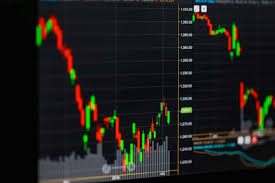
The Ultimate Guide to Forex Trading: Strategies and Insights
Forex trading, or currency trading, has gained immense popularity over the years, attracting traders from all backgrounds. The ease of access, coupled with the potential for significant profits, makes it an appealing option for anyone looking to enter the financial markets. In this guide, we will delve into various aspects of Forex trading, including strategies, tools, and resources to help you become a successful trader. If you’re interested in Forex brokers, consider checking forex and trading Forex Brokers in Cambodia for reliable options that can cater to your trading needs.
Understanding the Forex Market
The Forex market is the largest financial market in the world, with a daily trading volume exceeding $6 trillion. It operates 24 hours a day, five days a week, allowing traders to engage in currency trading at any time. This market is decentralized, meaning that there is no single exchange or physical location where currency transactions take place. Instead, trading occurs electronically over-the-counter (OTC) through a network of banks, brokers, and financial institutions.
Participants in the Forex market include central banks, financial institutions, hedge funds, corporations, and retail traders. The primary objective is to profit from the fluctuating exchange rates between different currencies. The most widely traded currencies include the US dollar (USD), euro (EUR), Japanese yen (JPY), and British pound (GBP).
Basic Terms in Forex Trading
Before diving into strategies, it’s crucial to understand some basic terms associated with Forex trading:
- Currency Pair: Currencies are traded in pairs, such as EUR/USD, which represents the exchange rate between the euro and the US dollar.
- Pip: A pip is the smallest price move in a currency pair, typically the fourth decimal place. For example, if EUR/USD moves from 1.1200 to 1.1201, that is a one pip increase.
- Leverage: Leverage allows traders to control a larger position with a smaller amount of capital. For instance, with a 100:1 leverage, you can control $100,000 with just $1,000 in your trading account.
- Spread: The spread is the difference between the bid price and the ask price of a currency pair. It represents the broker’s profit from the trade.
Types of Forex Trading Strategies

Forex traders use various strategies depending on their trading goals, risk tolerance, and market conditions. Here are some common strategies:
1. Day Trading
Day trading involves opening and closing trades within the same day. Day traders aim to capitalize on short-term price movements and typically focus on highly liquid currency pairs. This strategy requires constant monitoring of the market and quick decision-making.
2. Swing Trading
Swing traders hold positions for several days to take advantage of expected price changes. This approach allows traders to benefit from market swings without the need for constant monitoring. Swing trading combines technical and fundamental analysis to identify potential entry and exit points.
3. Position Trading
Position trading involves holding positions for weeks, months, or even years. This long-term strategy relies on fundamental analysis and macroeconomic trends. Position traders often ignore short-term fluctuations, focusing instead on the overall direction of the market.

4. Scalping
Scalping is a high-frequency trading strategy where traders aim to make small profits from numerous trades throughout the day. Scalpers rely on quick trades, often holding positions for just a few seconds or minutes. This strategy requires a deep understanding of the market and the ability to make rapid decisions.
Essential Tools for Forex Traders
To enhance your trading experience and improve your decision-making process, consider utilizing the following tools:
- Charting Software: Advanced charting tools provide valuable insights into price trends, helping traders make informed decisions.
- Economic Calendar: An economic calendar helps traders stay updated on important economic events and announcements that could impact currency prices.
- Risk Management Tools: Tools such as stop-loss and take-profit orders are essential for managing risk and protecting your capital.
- Trading Journals: Keeping a trading journal allows you to track your performance, analyze your trades, and identify areas for improvement.
Risk Management in Forex Trading
Effective risk management is crucial in Forex trading. Here are some key principles to consider:
- Only Use Capital You Can Afford to Lose: Never risk money that you cannot afford to lose. Set aside a specific amount for trading, and stick to it.
- Set Stop-Loss Orders: Implementing stop-loss orders helps limit your losses on each trade, allowing you to manage your risk effectively.
- Diversify Your Trades: Avoid putting all your capital into a single trade. Diversifying your investments across different currency pairs can help mitigate risks.
- Maintain a Good Risk-Reward Ratio: Aim for a risk-reward ratio of at least 1:2, meaning that for every dollar you risk, you should aim to make at least two dollars in profit.
Conclusion
Forex trading can be a rewarding venture for those who take the time to learn the necessary skills and apply effective strategies. By understanding the market dynamics, utilizing the right tools, and implementing sound risk management practices, traders can increase their chances of success. Whether you are a beginner or an experienced trader, this guide serves as a foundation for your Forex trading journey. Always remember to stay informed and adapt to changing market conditions to thrive in the ever-evolving world of Forex trading.

Recent Comments